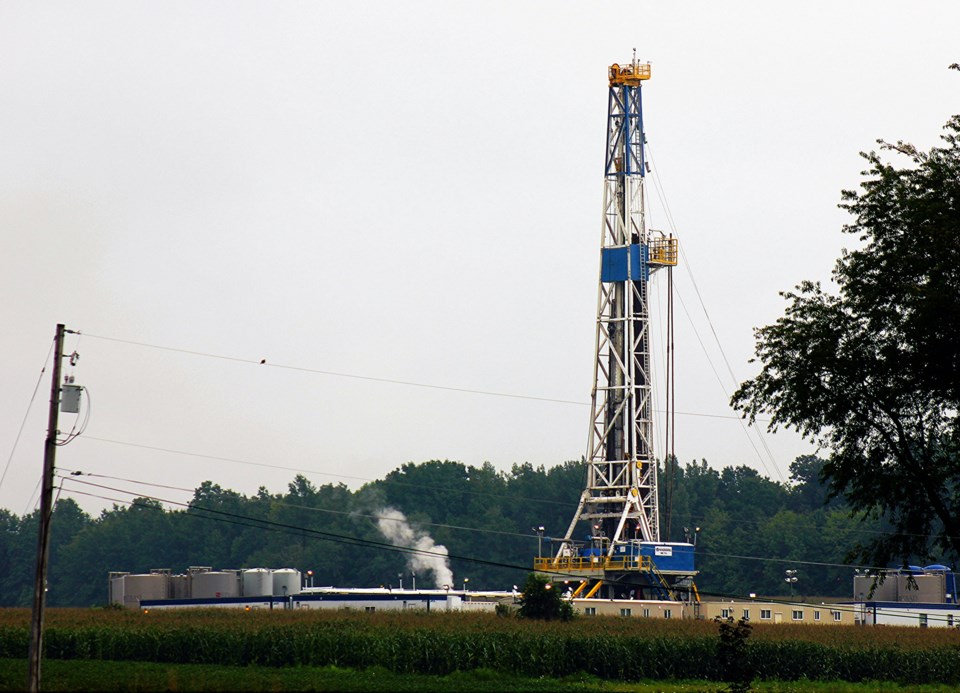An earthquake that shook parts of Alberta and northern B.C. Thursday is suspected to be the result of oil and gas activity.
According to the Alberta Geological Survey, the more than 5-magnitude earthquake struck Thursday, Feb. 20, at 7:41 a.m. PT, with an epicentre about 100 kilometres south of Grande Prairie, Alta. Earthquakes Canada said the quake would have been lightly felt in the surrounding communities of Edson, Grande Prairie and Whitecourt, as well as in Prince George, B.C.
By Friday morning, the Alberta Geological Survey’s earthquake dashboard had classified the event was “suspected induced” — a term used to describe seismic events that have not been reported by industry, and may require additional analysis before a more conclusive classification can be applied.
Honn Kao, a seismologist with the Geologic Survey of Canada who heads the federal government's Induced Seismicity Research Project, said his team is waiting to receive information from his Alberta counterparts before making a final determination.
“At this moment, the preliminary assessment is that it is probably related to an injection operation in the area,” said Kao.
Alberta Energy Regulator spokesperson Coral Hulse said the regulator requires companies to “engage mitigation protocols when events occur.”
Hulse added that its geological survey division is reviewing the incident to determine its cause.
Initially detected as a 5.2-magnitude event, Kao said his team has since downgraded it to a 4.7 magnitude earthquake. Still, the seismologist said that if the earthquake is confirmed as industry induced, it would represent a relatively major event much larger than the small earthquakes usually triggered by fluid injection.
In Canada, Kao says roughly one per cent of earthquakes have been linked to human activity. One of the largest human-induced earthquakes was in 2016, when a magnitude 4.8 quake hit Fox Creek, Alta. The shaking, thought to be set off by a Repsol Oil & Gas fracking operation, was so strong it was felt 280 kilometres away, CBC News reported at the time.
Most earthquakes occur along the margins of tectonic plates and fractures known as fault lines. When oceanic and continental plates collide, they rub, shift and slip past one another, releasing vast amounts of energy in the process. On the surface, we feel that as an earthquake. At sea, a sudden displacement of the water column could trigger a tsunami.
On Friday, a separate earthquake struck B.C.'s Sunshine Coast 23 kilometres northeast of Sechelt, sending people ducking under tables and rattling buildings across the province's largest urban centres. Early estimates from the U.S. Geological Survey and Earthquake Canada ranged from magnitude 4.7 to 5.1. There were no early reports of damage.
And last week, people living on southern Vancouver Island reported feeling a 3.8 magnitude earthquake that struck off the coast Thursday, Feb. 13, at around 10 p.m.
It was lightly felt in Victoria, Sidney and across southern Vancouver Island, with Earthquakes Canada saying more than 300 people reported feeling it.
There was no reported damage from any of the recent quakes in B.C.
Rise in human-caused earthquakes
Not all earthquakes are the result of natural processes. One that reviewed 730 anthropogenic projects thought to have induced earthquakes found mining was the most common seismic trigger, often due to collapsed material setting off shaking.
The most powerful human-triggered earthquake is thought to be the 2008 , which at magnitude 7.9, killed nearly 90,000 people. Scientists believe the earthquake's origins go back to 2015, when the Zipingpu Reservoir impounded 320 million tonnes of water. The water’s weight is thought to have pushed down on the Longmen Shan fault line, hastening the earthquake’s arrival by up to hundreds of years.
In recent decades, the hydraulic fracturing industry has picked up the mantle as a major cause of induced earthquakes. Also known as fracking, the extraction technique blasts pressurized liquid underground to fracture bedrock formations laced with hydrocarbons. Particles like sand hold open the cracks, allowing natural gas and petroleum to pass through to the surface where it can be collected, processed and burned.
Underground, the injected fluid raises the pressure in the cracks, fissures and the pores between sand and rock. Over years of extraction, that of underground formations, eventually coming into contact and lubricating a seismic fault.
In the central United States, where fracking and wastewater injection from the oil and gas industry have expanded widely over the past decades, the number of earthquakes has increased dramatically.
According to the , the region experienced an average of 25 earthquakes of magnitude 3 and larger between 1973 and 2008. In 2009, that number more than doubled, and by 2015, more than 1,000 earthquakes M3 or larger hit the central U.S. In 2016, a magnitude 5.8 hit the Pawnee Nation, injuring a man as he tried to protect his child from falling bricks.
B.C. moves to strengthen oversight over induced earthquakes
Earlier this month in British Columbia, the province’s energy regulator said it has toughened its oversight over induced seismic activity after a series of fracking-linked earthquakes occurred in B.C.’s northeastern corner.
The quakes ranged in magnitude from 3.1 to 4.7, with the most powerful felt in Fort St. John, B.C., about 105 kilometres southeast of the epicentre.
B.C.'s energy regulator issued an update last week saying it was "strengthening" its oversight of induced seismicity in the region by "enhancing" an existing order in the Kiskatinaw seismic monitoring and mitigation area, and adding a new one for the nearby Wonowon-Pink Mountain area.
The orders require operators in the two areas to immediately halt operations if they trigger a seismic event of a certain magnitude. They also require real-time seismicity monitoring and the submission of pre-assessments with each notice of operation.
With files from the Canadian Press



